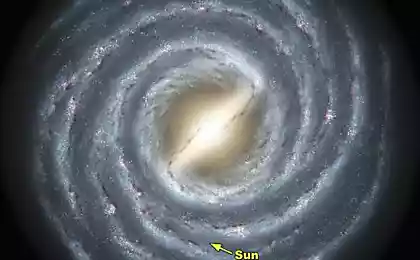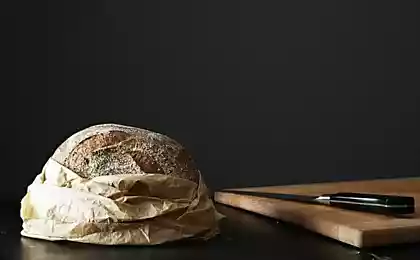542
Scientists already know how to store solar energy for 100 years

The sun is a giant source of energy. In just one hour it is poured on the Ground in such numbers that humanity would have sufficed for all their needs for a whole year. If people only knew how to collect and preserve it. But storing solar energy is not a trivial task. And here the student of the University of Copenhagen (University of Copenhagen) took over the investigation in the search path, which could be the basis of technologies that capture light energy and store it for use during rainy days. Even now, when solar energy is not yet widespread, it is used in the manufacture of fuel for cars.
About it in the article "Better battery for storing solar energy?" referring to the faculty of science, University of Copenhagen reports ScienceDaily. Student of the Department of chemistry of the institution Anders Bo SKOV (Skov Anders Bo) recently began study for a master's program. Together with my supervisor Mogens Nielsen Brandsteder (Mogens Brøndsted Nielsen), he published an article "Towards Solar Energy Storage in the Photochromic Dihydroazulene-Vinylheptafulvene System based On solar energy storage in photochromic digidrofolieva-vinylpirrolidone system") in the journal "Chemistry — A European Journal".
Professor Brested is the head of the "Center for solar energy" ("Center for Exploitation of Solar Energy), University of Copenhagen. His team is working on molecules that are able in significant volumes to collect and keep solar energy and store it for a long time to use as needed. Unfortunately, a year of research, they found that when the ability of the molecules to harvest the energy increases, it decreases their ability to keep it.
Scientists working on molecules, which are called digidrofolieva-vinylpirrolidone system (Dihydroazulene-Vinylheptafulvene). She accumulates energy, changing its shape. But every time the team of Professor Branstad seeks to improve these molecules, they lose some of their ability to keep their "energy-storage" form. I told myself Professor Brunstad:
In spite of all that we do, to prevent this, the molecules change their shape back and release the stored energy in an hour or two. The achievement of Anders is that he coped with the task of doubling the energy density in the molecule, which can retain its shape for hundreds of years. Our only difficulty now is how to get her to release the energy again. This molecule does not seem to change its shape in the opposite direction.
During his training at the bachelor's degree, Anders Bo SKOV had four months to improve the unstable molecule of Branstad in the framework of its bachelor project. And he managed to achieve this. Chemistry in many ways similar to the work of the Baker. The bread will come out of the oven, if, for example, the flour will disappear from the test. Using this analogy, SKOV saw that the molecule loses energy:
My chemical "recipe" demanded the four-step synthesis to work. The first three were easy. I designed them in just a month. The third step took me three months.
Regardless of the method, when you want to save energy, there is a theoretical limit of energy density. And now a reality. In theory, a kilogram of the desired molecules can save a megajoule of energy in the case where the molecules have the appropriate design. This amount of energy you can bring three liters of water from room temperature to boiling.
Pounds molecules developed by SKOV, can only boil 75 CL of water, but the whole process takes only three minutes. This means that the molecules of its development, is able to boil 15 gallons of water per hour and SKOV, as his supervisor, believes that this is only the beginning. Professor Brested with obvious enthusiasm says:
Achieving Anders ' important and extraordinary. I must say that we do not have a good method of release of energy by necessity and we need to continue to improve the energy density. But now we know what path to follow to achieve success.
Molecules are quite stable by themselves. In this case, said Professor Branstad, they are completely non-toxic. When the ability to store solar energy is achieved, according to the Professor, the developed solution will compete with lithium-ion batteries, as lithium is a toxic metal. Developed by Professor Brainstem molecules in the process, does not emit any CO2 or any other chemical compounds. And when a molecule consumed, it is converted into a pigment, which is also contained in the flowers of chamomile. It should be noted that earlier solar panels had learned to make from shrimp shells.
Despite the obstacles, SKOV has got such a pleasant experience from his undergraduate project that he decided to include it in their master's program. Typically, students begin their program with a one-year course and only then proceed to the examination of their theses. SKOV just continues in the laboratory, the work that was initiated in the framework of its bachelor project. His work is part of the University's "Center for solar energy" which will guide his ideas on improving trapping the Sun's energy molecules. Now he would "teach" the molecules to release the energy as needed. And 25-year-old graduate student seeking to develop such an obedient molecule, which not only stores energy, but also allows her to continue to use. Solar energy is also used in refrigerators that require no electricity.published
P. S. And remember, only by changing their consumption — together we change the world! ©
Source: hi-news.ru























